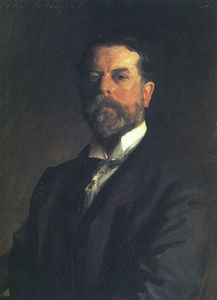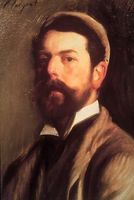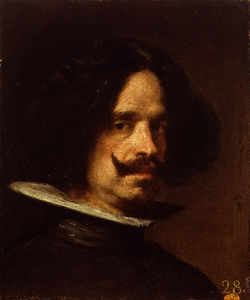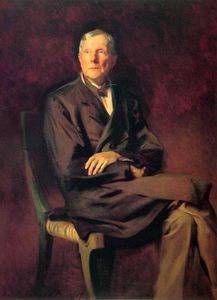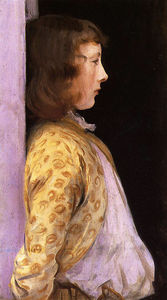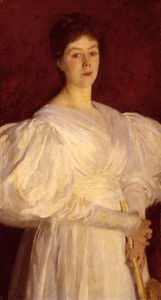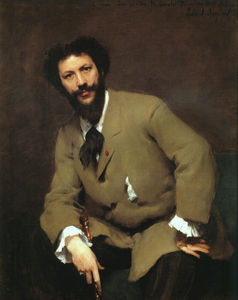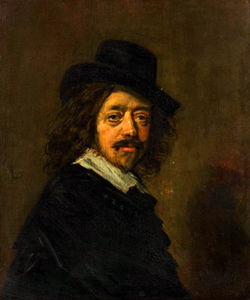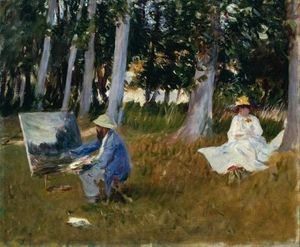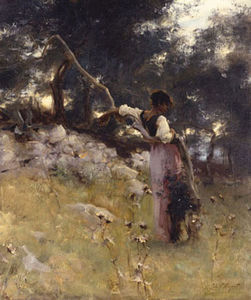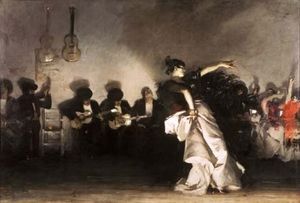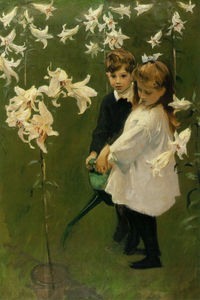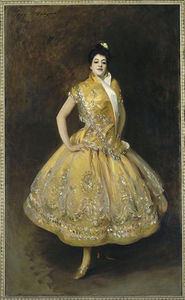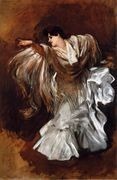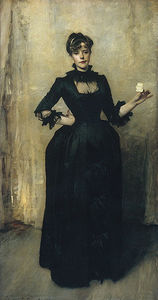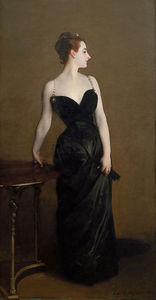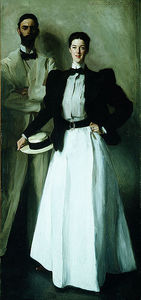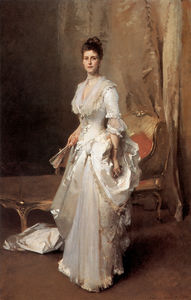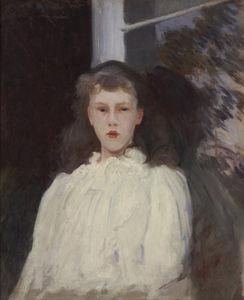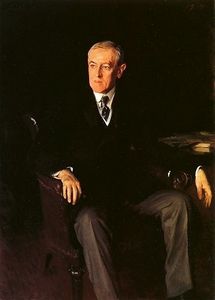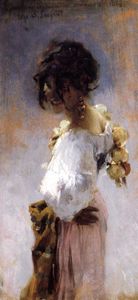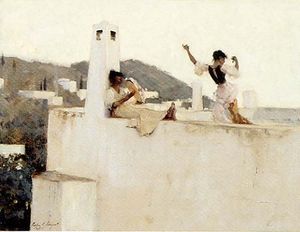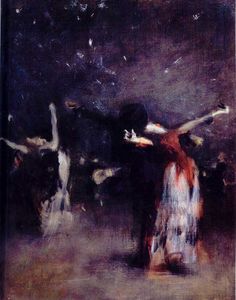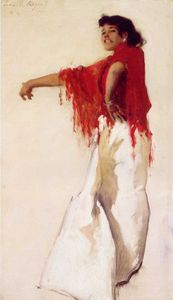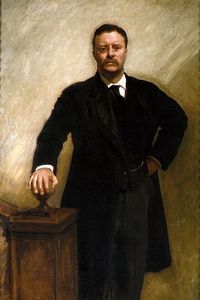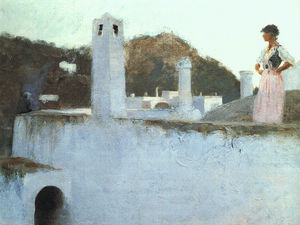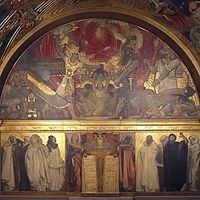John Singer Sargent
- Short Name:
- Sargent
- Date of Birth:
- 12 Jan 1856
- Date of Death:
- 14 Apr 1925
- Focus:
- Paintings
- Mediums:
- Oil, Watercolor
- Subjects:
- Figure, Landscapes, Scenery
- Art Movement:
- Realism
- Hometown:
- Florence, Italy
- John Singer Sargent Page's Content
- Introduction
- Artistic Context
- Biography
- Style and Technique
- Who or What Influenced
- Works
- Critical Reception
- Bibliography
Introduction
At the turn of the century, John Singer Sargent was the
portrait artist for rulers and the upper-class in both Europe and the United States of America. Sargent's best portraits reveal the individuality and personality of his sitters; his admirers think he is second only to Velázquez. Although primarily known for his portraiture, Sargent experimented with many artistic styles, especially while travelling, a passion he indulged with sketchbook in hand.
However, he never embraced the modern styles that became in vogue towards the end of his career, and for this he was criticized. His personal life is not as colorful as some of the more well-known artists. Sargent was, quite simply, a private man who worked hard and was extremely good at what he did, with a uniformity of excellence that shocks even some of his critics.
John Singer Sargent Artistic Context
Sargent was one of the last great Realist artists of his time. Realism was a reaction against Romanticism and sprung out of the toppling of the old order during the French Revolution. Influenced by modern journalism which was invented at the same time, Realism focused on the modern world instead of the historical, the truth instead of the varnished truth. Sargent was rooted in the classical tradition of the old masters such as Velasquez, but he also experimented with the styles of Impressionism and watercolors.
Sargent refused to embrace the modern styles that became popular towards the last decades of his life, stating to effect: "I like what I like. " Towards the end of his career, his most notable and prolific works were murals in the classical style, for which he abandoned all his Realist mannerisms. One wonders if it is a coincidence if, nearing the end of his life, Sargent painted classic, historical scenes while modern trends passed him by.
John Singer Sargent Biography
John Singer Sargent was born to parents with artistic backgrounds who noticed and nurtured his talents from the start. Soon after Sargent began his formal training, his talent was recognized and it took little more than a decade for the rest of the world to realize it.
Early Years:
Early on in his training, Sargent became the darling of the Parisian art world, a reputation that he damaged in 1884 with his exhibition of the sexually suggestive (for the time period) Madame X. In reaction to this, he moved to London to start his career anew. At first, his reception was chilly but he won the British art world over with his 1887 exhibition of the portrait Carnation, Lily, Lily, Rose which proved the launching pad for his phenomenally successful career.
Middle Years:
Sargent did not let his success in obtaining commissions from some of the most important European and American figures, such as two American presidents and several members of the aristocracy, go to his head. He had no assistants and remained extremely productive. The artist experimented with Impressionism and watercolors, although mainly in his downtime. In 1890, Sargent began work on a religious-themed mural for the Boston Public Library, which he continued to work on for the next thirty years.
Advanced Years:
In 1907, Sargent announced to the art world that he was abandoning portraiture, although he continued work on a few select commissions, most notably John D. Rockefeller in 1917. His main reason for abandoning portraiture was his boredom with the genre. He continued work on his murals and watercolor paintings. In 1925 Sargent died in London, without having married or left behind any known descendants.
John Singer Sargent Style and Technique
John Singer Sargents' portraits can be described as examples of Realism. Realism was an art movement devoted to reflecting what the artist saw rather than a romanticized truth, the everyday as opposed to the idealistic. Despite being know mainly for his portraits of the rich and famous, Sargent dedicated as much energy and skills to works of the lay man and even the poor as he did to presidents and kings.
His lack of use of under painting and under drawing allowed for more spontaneous, less controlled brush strokes which gave the effect of capturing the sitter in a candid moment. At the same time, he was able to manipulate props to convey the social status of his subjects, particularly in his use of texture to detail fine fabrics.
It's possible that Sargent can be considered a generalist, for he mastered and fused various different styles: classical portraits, impressionism, landscapes, watercolors and murals.
For his murals, he relied on his extensive knowledge of art history as well as equally extensive travel research, which took him across two continents. This seriousness distinguished Sargent from many other historical muralists of the period. Many critics thought that what Sargent accomplished with his mural paintings had not been seen since the Renaissance.
Who or What Influenced John Singer Sargent
John Singer Sargent was influenced by many styles and masters, drawing inspiration in particular from Velasquez and Hal. His classically-inspired training at the Ecole des Beaux Arts also left its mark on his masterpieces.
Diego Velasquez, Realism:
Diego Velasquez, the great Spanish master of the 17th century, influenced many Realist artists. Realism was dedicated to depicting life as it was and not how it should be. Although Velasquez had many rich and powerful clients, he did not bow to the pressure to idealize his subjects. Velasquez was the first great master to do away with under-painting and under-drawing entirely, choosing instead to apply paint directly to the canvas.
The artists' bold, loose brush stroke gave his works an air of spontaneity, which belies the great technical skill and thoughtfulness behind the technique. Sargent went to Spain to study his works in person, as well as studying closely with a teacher, Carolus-Duran, who incorporated Velasquez's' techniques.
Frans Hal, Impressionism:
While Hal did not do away with under-painting and under-drawing entirely as Velasquez had done, he used it to a much lesser extent than his contemporaries. Like Velasquez, he achieved a spontaneous, natural-looking effect with the use of broad, loose brush strokes. Frans Hals also knew when to hold back, omitting certain details to achieve the effect of the sitter in favor of a more polished look. He was an immense influence for Impressionist painters who believed in capturing the effect rather than the details of the moment. Sargent adopted these techniques in his watercolors.
The Ecole des Beaux Arts:
Sargent received a good deal of his training at the Ecole des Beaux Arts. The school was oriented towards the old styles, particularly the Renaissance. The Renaissance movement drew heavily from the classical periods and the 'painterly' techniques of the old masters, and combined it with a technically-advanced linear perspective. Sargent used this training to help him construct his classically-inspired murals.
John Singer Sargent Works
John Singer Sargent Critical Reception
The reaction to Sargents' work during his lifetime was mostly positive up until his final years. No one dared criticized his formidable technical skill but many considered him a relic for not adopting any of the modern styles of the time, or creating any of his own. Ironically, at the start of his career, his paintings were criticized for being too strange and avant-garde.
Contemporary Reception:
Sargent began his career as the darling of the Parisian art world - a reputation that was soured by scandal in 1884 with his daring and somewhat provocative portrait Madame X. Shortly after this he moved to London. While the art world there initially considered Sargent to be too advanced, he won them over in a matter of years, gaining the acclaim of the American public as well. Sargent enjoyed immense success with his portraits until he gave these up in 1907 to focus on other genres.
His watercolor paintings were acclaimed by critics, although he is not as celebrated for them. The artist's classical-based murals were initially well-received, but then dismissed as out-of-date, along with murals in general.
Current Reception:
Although initially dismissed as a relic of the Gilded Age, Sargents' reputation enjoyed a revival in the 1960s, along with Victorian Art as a whole.
John Singer Sargent Bibliography
Much has been written about John Singer Sargents' life and his contribution to the Realism movement. Below is a selection of recommended works for further reading.
Books:
• Charteris, Evan. John Sargent (1927, reprinted 1972)
• Charles Merrill Mount, John Singer Sargent, 3rd ed. (1969)
• Stanley Olson, John Singer Sargent, His Portrait (1986, reissued 1989)
• Ormond, Richard. John Singer Sargent: Paintings, Drawings, Watercolors (1970)
• Ratcliff, Carter John Singer Sargent (1982)
• Hills, Patricia et al. , John Singer Sargent (1986)
Articles:
• Ormand, Richard and Kilmurray, Elaine. Sargent: The Early Portraits, Yale University Press, New Haven, 1998, p. 114
Online Sources:
• http://www.sargentmurals.bpl
• http://jssgallery.org/

